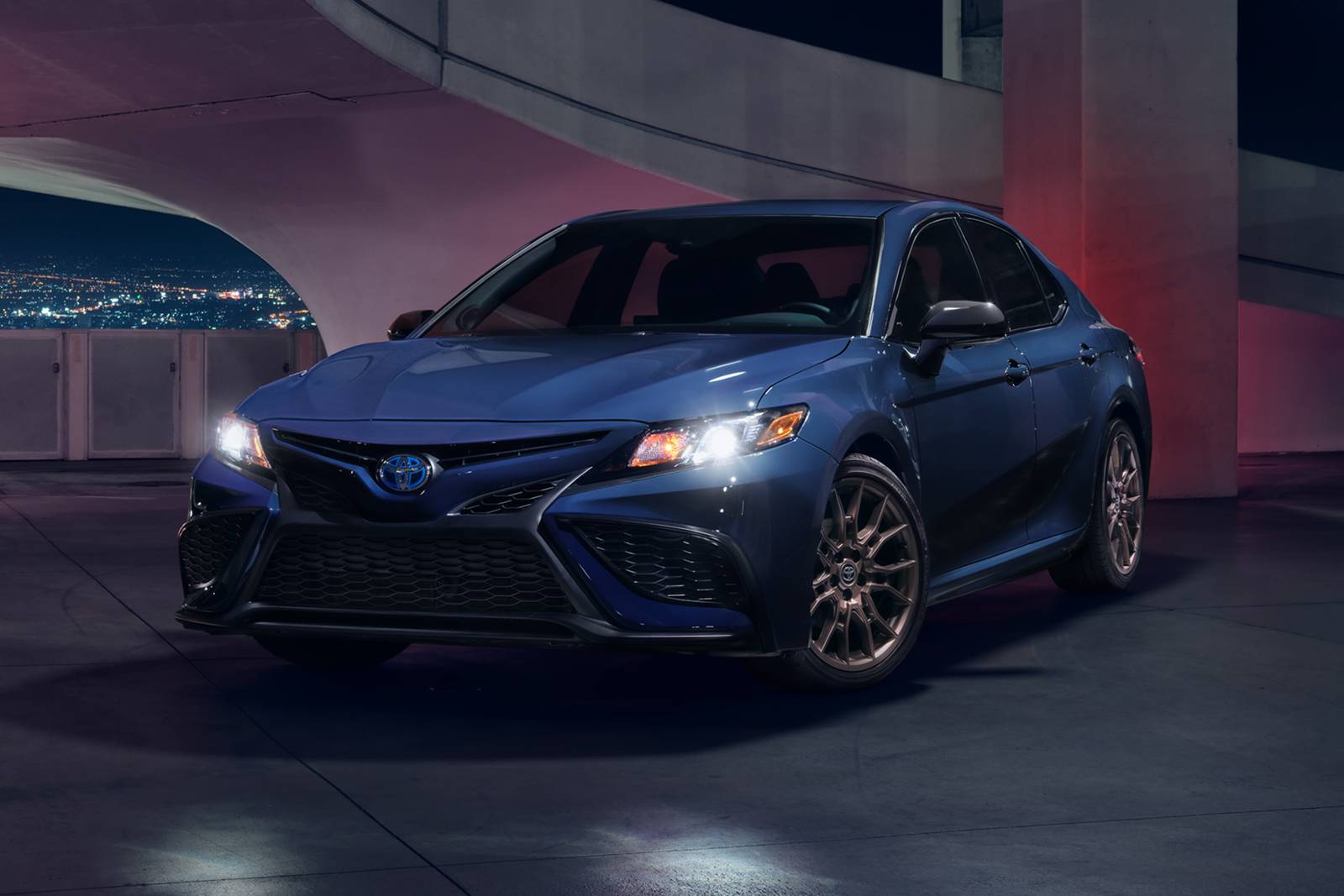Eco-friendly cars whether hybrid, plug-in hybrid, or fully electric have become increasingly popular due to rising fuel prices and environmental concerns.
However, not all eco cars are built to last. Some models stand the test of time with minimal issues, while others show significant wear, battery degradation, or mechanical troubles after just a few years.
Here’s a list of five eco cars that last seemingly forever and five that fade fast, helping buyers make smart, sustainable choices.
5 Eco Cars That Last Forever
In a world where sustainability and smart spending go hand in hand, eco-friendly cars have come a long way—not just in reducing emissions, but in proving their staying power. Today’s top green vehicles aren’t just about saving fuel or cutting carbon; they’re built to go the distance, both mechanically and environmentally.
If you’re looking for a car that’s as reliable as it is responsible, these five eco cars stand out for one key reason: they’re built to last. Whether you’re trying to lower your footprint or simply tired of vehicles that wear out too soon, these are the models worth your attention.
Also Read: Top 10 Long-Lasting Cars That Get Over 30 MPG
1. Toyota Prius
The Toyota Prius is the poster child of hybrid durability. With decades of refinement, its hybrid powertrain is known for lasting over 200,000 miles with proper maintenance.
- Why it lasts: Proven hybrid technology, bulletproof Toyota engineering, and affordable parts.
- Bonus: Many taxis use Priuses due to their extreme reliability and low operating costs.
The Toyota Prius continues to emphasize fuel efficiency, delivering an EPA-estimated 57 mpg combined for front-wheel-drive versions and 54 mpg combined for all-wheel-drive variants.
It utilizes the fifth-generation Toyota Hybrid System in conjunction with a 2.0L engine, resulting in a net-combined output of up to 196 horsepower. All-wheel drive is offered across the entire range of trim levels.
For 2025, the Prius lineup sees the introduction of a new Nightshade grade. This version, built on the XLE trim, brings black exterior accents, 19-inch black-finished alloy wheels, and a distinctive Karashi exterior paint color, adding a sportier edge to the model’s appearance.
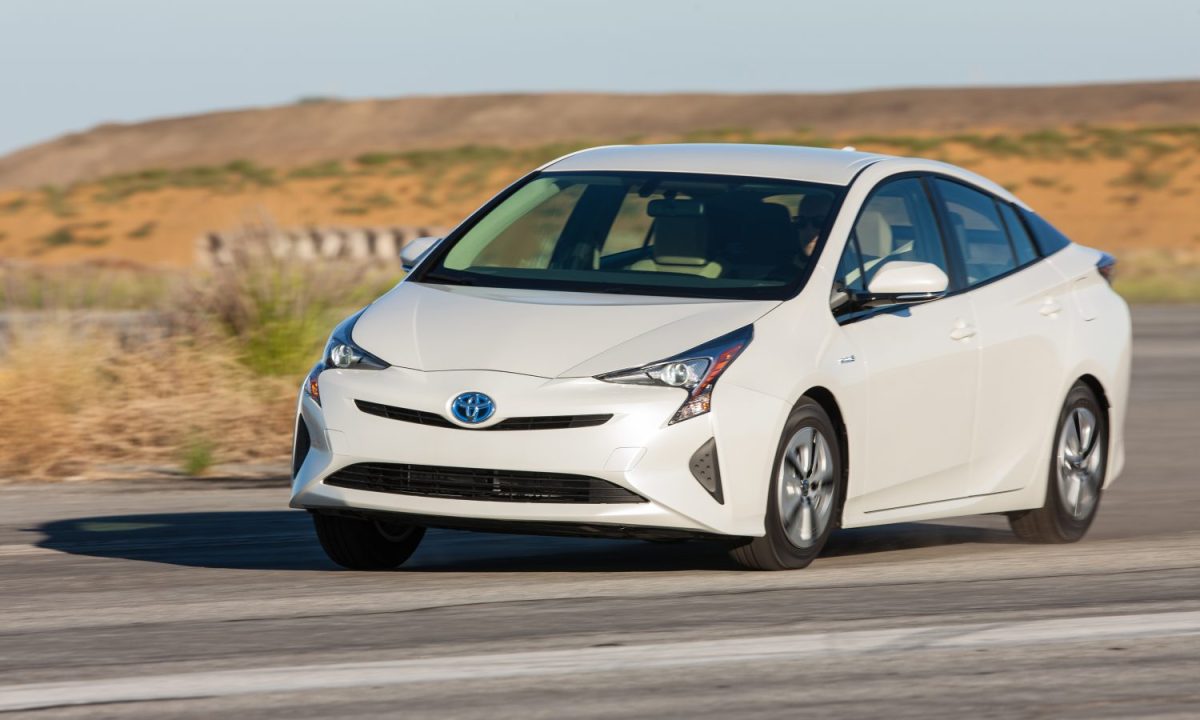
Technology continues to be a central feature, with Toyota Audio Multimedia included as standard on all trims. Lower trims are equipped with an 8-inch touchscreen, while the Nightshade and Limited trims come with a larger 12.3-inch display. Standard features include wireless Apple CarPlay and Android Auto, and higher-end models have the option of a JBL Premium Audio system.
In terms of safety, every 2025 Prius model is outfitted with Toyota Safety Sense 3.0 as standard. Pricing for the 2025 Prius starts at an MSRP of $28,350, with availability expected later in the year at dealerships.
2. Honda Insight (2nd Gen)
Though not as popular as the Prius, the second-generation Honda Insight (2009–2014) has developed a reputation for resilience.
- Why it lasts: Simple hybrid design, high MPG, and fewer electronics compared to newer models.
- Known for: Minimal battery issues and high longevity with basic maintenance.
The Honda Insight played a key role in the brand’s hybrid portfolio throughout the first two decades of the 2000s, though none of its three generations achieved significant commercial success.
The first-generation Insight debuted in the U.S. for the 2000 model year as a compact two-seat hatchback, bringing hybrid technology to North America a year before the Toyota Prius arrived. While its futuristic design stood out, it failed to resonate with a broad consumer base.
The second-generation Insight, built from 2009 to 2014, adopted a more conventional five-seat hatchback format to directly challenge the popular Prius. Despite this shift, it fell short in terms of interior space and features compared to its Toyota counterpart.
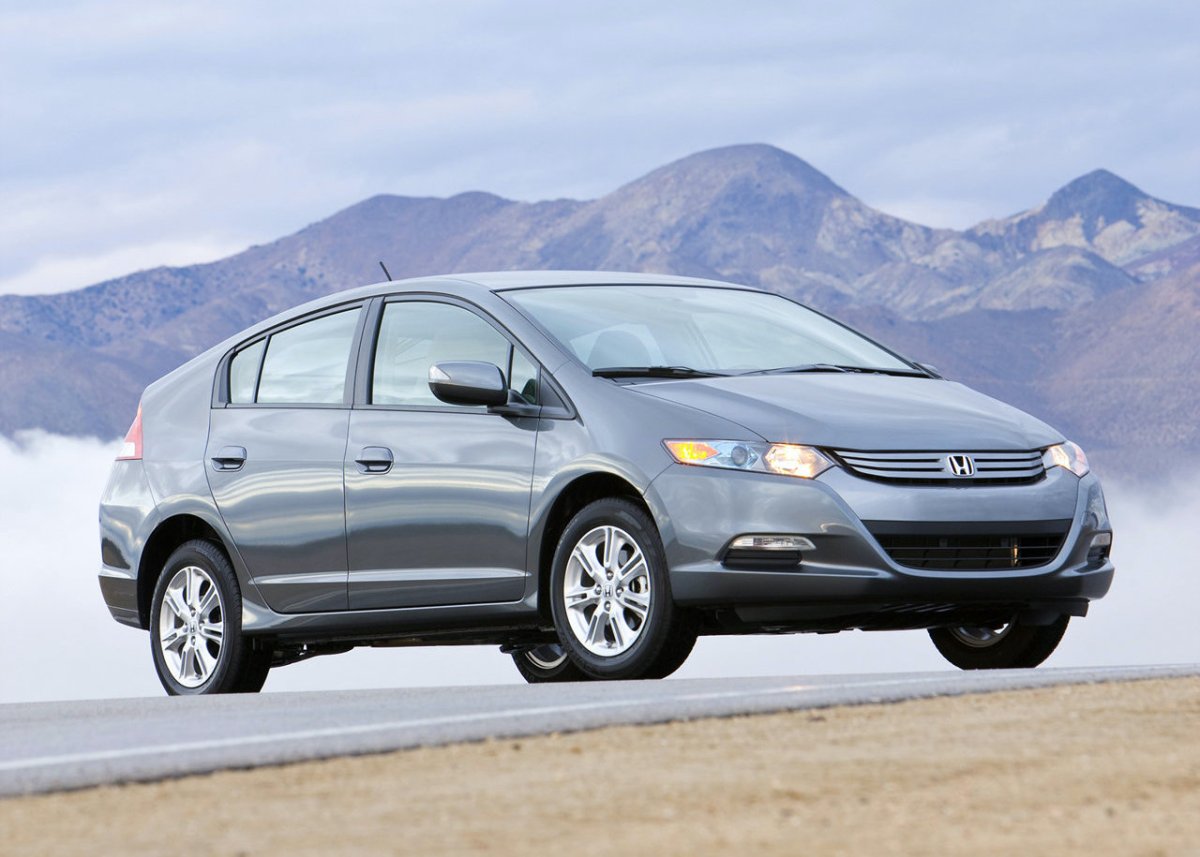
When the third generation launched in 2019, Honda reimagined the Insight as a compact sedan with styling influenced by the well-received Civic. This version utilized Honda’s advanced two-motor hybrid system and was positioned as a more refined, upscale alternative to the Civic.
The third-gen Insight ended production after the 2022 model year, but by the mid-2020s, hybrid powertrains had become available in the Accord, CR-V, and Civic, continuing Honda’s hybrid evolution.
Also Read: 5 Sedans With Highest Top Speeds And 5 With Governors
3. Lexus RX 450h
Luxury doesn’t always mean fragile Lexus nailed the hybrid formula with the RX 450h. Many owners report these SUVs going well beyond 200,000 miles.
- Why it lasts: Toyota’s hybrid system plus Lexus’s premium build quality.
- Strengths: Strong resale value and exceptional ride quality even with high mileage.
The mid-size RX crossover SUV may not be the vehicle that originally cemented Lexus’s reputation—that distinction belongs to the LS400 luxury sedan, designed to rival the Mercedes S-Class—but once the RX was introduced, it quickly became the brand’s top seller. It continues to hold that position today.
Now in just its second model year, the latest RX brings significant news for 2024 with the debut of a plug-in hybrid variant: the RX450h+ (which we’ll refer to as RX450h going forward, as using arithmetic symbols in vehicle names feels out of place).
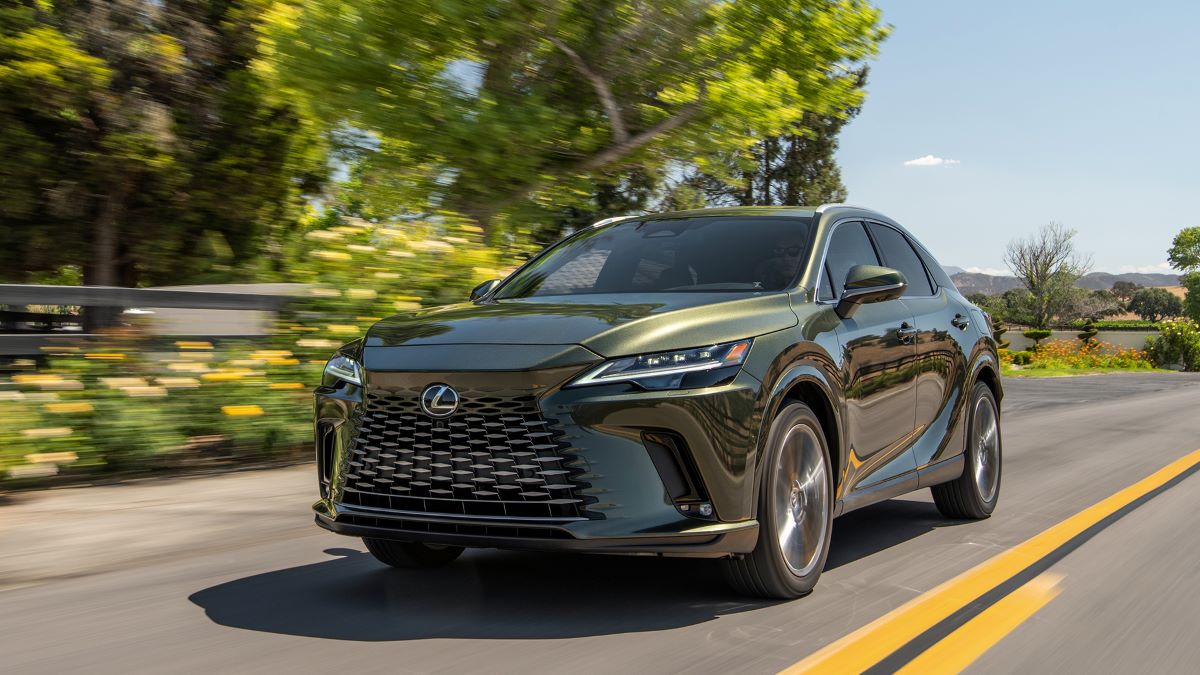
While hybrid versions have long been staples in the RX lineup—currently represented by the RX350h and RX500h—this marks the first time the RX is available as a plug-in hybrid.
The powertrain in this plug-in model isn’t new to Lexus, however. It was first introduced in the smaller NX SUV in 2022 and earlier in the Toyota RAV4 Prime. It combines a 2.5-liter four-cylinder engine with three electric motors and features standard all-wheel drive, with the rear wheels powered exclusively by electric motors.
Powering this setup is an 18.1-kWh battery pack—the same one found in the NX. According to the EPA, the RX delivers an electric-only range of 37 miles, matching the NX but trailing the RAV4’s 42-mile estimate.
The RX weighs 379 pounds more than the NX and 466 pounds more than the RAV4, which partly explains the difference. Still, a 37-mile EV range is sufficient for many drivers’ daily needs and compares favorably with rivals like the Volvo XC60 Recharge (36 miles), the Lincoln Corsair Grand Touring (27 miles), and the Audi Q5 55 (19 miles).
In real-world testing at a steady 75 mph, the RX ran for 28 miles on electricity before the gasoline engine took over. Once in hybrid mode, it averaged 30 mpg over the remainder of the test loop. That’s slightly below the XC60’s 33 miles of electric range and the NX’s same figure, but the RX outperformed the Volvo’s 28 mpg in hybrid fuel economy.
4. Toyota Camry Hybrid
Like the Prius, the Camry Hybrid shares the same robust hybrid powertrain, making it a reliable and long-lasting sedan.
- Why it lasts: Conservative design, strong battery life, and proven drivetrain.
- Use case: Ideal for commuters who want longevity with comfort.
The 2024 Toyota Camry Hybrid continues to be a standout choice for drivers seeking excellent fuel efficiency without compromising on comfort or practicality. It offers a comfortable driving position, impressive safety technology, and strong crash-test ratings, making it a solid contender in the midsize sedan category.
While its brakes can sometimes feel too sensitive—making smooth stops a bit tricky—and the ride quality on the LE and XLE trims may feel overly floaty at highway speeds, the overall driving experience remains pleasant. Additionally, the trunk space is slightly smaller compared to some rivals, which may be a consideration for those who prioritize cargo capacity.
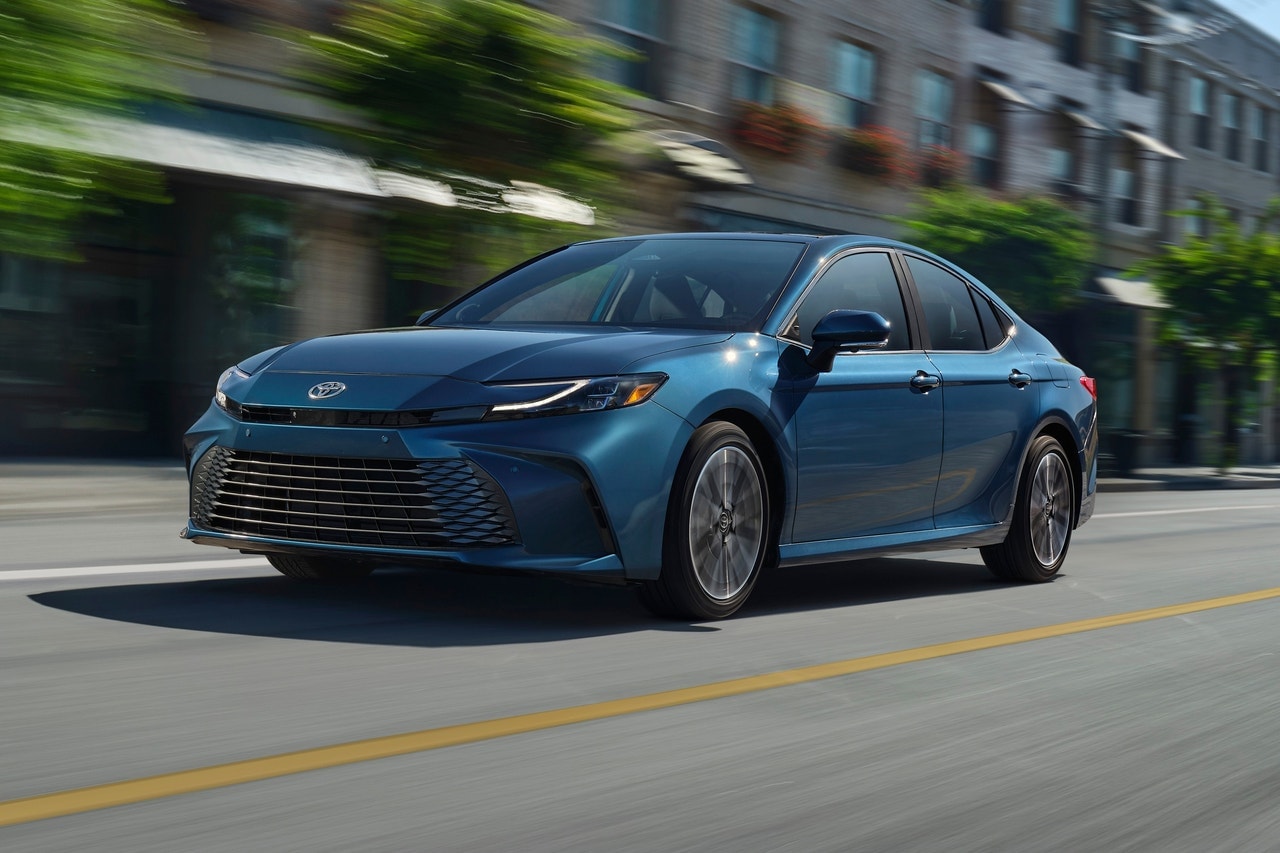
There are no changes to the Camry Hybrid for the 2024 model year, but a full redesign is expected for 2025. The current model remains part of the Camry’s eighth generation and continues to benefit from Toyota’s refined hybrid technology. Despite its size, the Camry Hybrid achieves fuel economy figures close to that of the smaller Prius.
According to the EPA, the LE trim delivers an outstanding 52 mpg in combined city and highway driving. Other trims like the SE, XSE, and XLE are rated slightly lower at around 46 mpg due to their larger wheels and tires, which trade off some efficiency for style.
In terms of operating costs, estimates based on fuel prices in North Dakota suggest that the Camry Hybrid LE will cost around $75 per month to drive, assuming 15,000 miles per year with a 55% city and 45% highway driving mix.
This is significantly lower than the average midsize car, which is estimated at $159 per month. Ultimately, the 2024 Camry Hybrid remains a top choice for buyers prioritizing fuel savings, safety, and a comfortable ride, with the added benefit of Toyota’s long-standing reliability and value.
5. Tesla Model 3 (Post-2020 Models)
While early Teslas had teething issues, the updated Model 3s are proving to be surprisingly durable. Their electric motors and battery packs are holding up well over time.
- Why it lasts: Fewer moving parts than gas vehicles and improved battery management systems.
- Caveat: Battery degradation is real, but modest in post-2020 builds.
The Model 3 has consistently held its place as one of the highest-rated compact luxury sedans, largely due to its exceptional performance and impressive range.
For 2024, Tesla builds on this foundation with a series of updates that refine the driving experience. As highlighted in our First Drive review, the latest iteration is significantly quieter, reducing road, wind, and tire noise. “You can have a normal conversation without raising your voice to be heard—a night-and-day difference,” we observed.
While the ride quality remains firm, there has been a noticeable improvement in comfort. The updated Model 3 exhibits less head toss and body jostling compared to earlier versions. For those seeking more responsive steering, the rear-wheel-drive version offers greater precision than the Dual Motor model, which can sometimes feel less connected to the road.
Inside the cabin, the minimalist aesthetic remains intact but receives a subtle refresh with new textured cloth materials and an ambient lighting strip across the dashboard. Rear-seat passengers will benefit from revised seat cushions that enhance comfort.

However, drivers who favor traditional physical controls may still find the single central screen frustrating, as Tesla continues to avoid buttons and knobs. Another small drawback is the glass roof, which lacks sufficient tinting to justify the absence of standard sunshades.
Past concerns about build quality appear to be addressed, with tighter and more consistent panel gaps evident throughout the vehicle.
5 Eco Cars That Fade Fast
When it comes to eco-friendly cars, innovation and sustainability often take center stage. From hybrid hatchbacks to fully electric vehicles, the push toward greener transportation has brought exciting new options to the market. But not all of these eco cars live up to the hype over time.
While they may promise low emissions and impressive fuel savings, some models fade fast—losing value quickly, falling short on performance, or simply failing to capture long-term buyer interest. In this article, we take a closer look at five eco cars that, for one reason or another, didn’t stand the test of time.
1. Nissan Leaf (1st Gen)
The early Nissan Leaf was a pioneer in affordable EVs, but its lack of thermal battery management hurt its longevity.
- Why it fades: Battery degradation in hot climates, limited range after a few years.
- Common issues: Sudden drops in driving range, especially in older models.
In a bold and unprecedented move, Nissan Jidosha Kabushiki-gaisha has made automotive history by revealing its first zero-emissions vehicle designed for mass production. Rather than following the trend of gas/electric hybrids, Nissan has chosen to leap directly into the world of plug-in electric vehicles
This ambitious strategy, spearheaded by Carlos Ghosn, gives the impression of a calculated global push that hinges on long-awaited lithium-ion battery technology. This past Sunday, the Japanese automaker introduced the Nissan Leaf at its Yokohama headquarters.
The Leaf is a five-door electric vehicle boasting a range of over 100 miles. It sports a sleek, upright V-shaped design accented by slanted LED headlights that are engineered to split and redirect airflow away from the door mirrors—enhancing aerodynamics by reducing wind resistance, noise, and drag.
The much-anticipated battery system powering the Leaf consists of laminated lithium-ion cells capable of delivering over 90 kW of power, with a total weight of only 440 pounds.
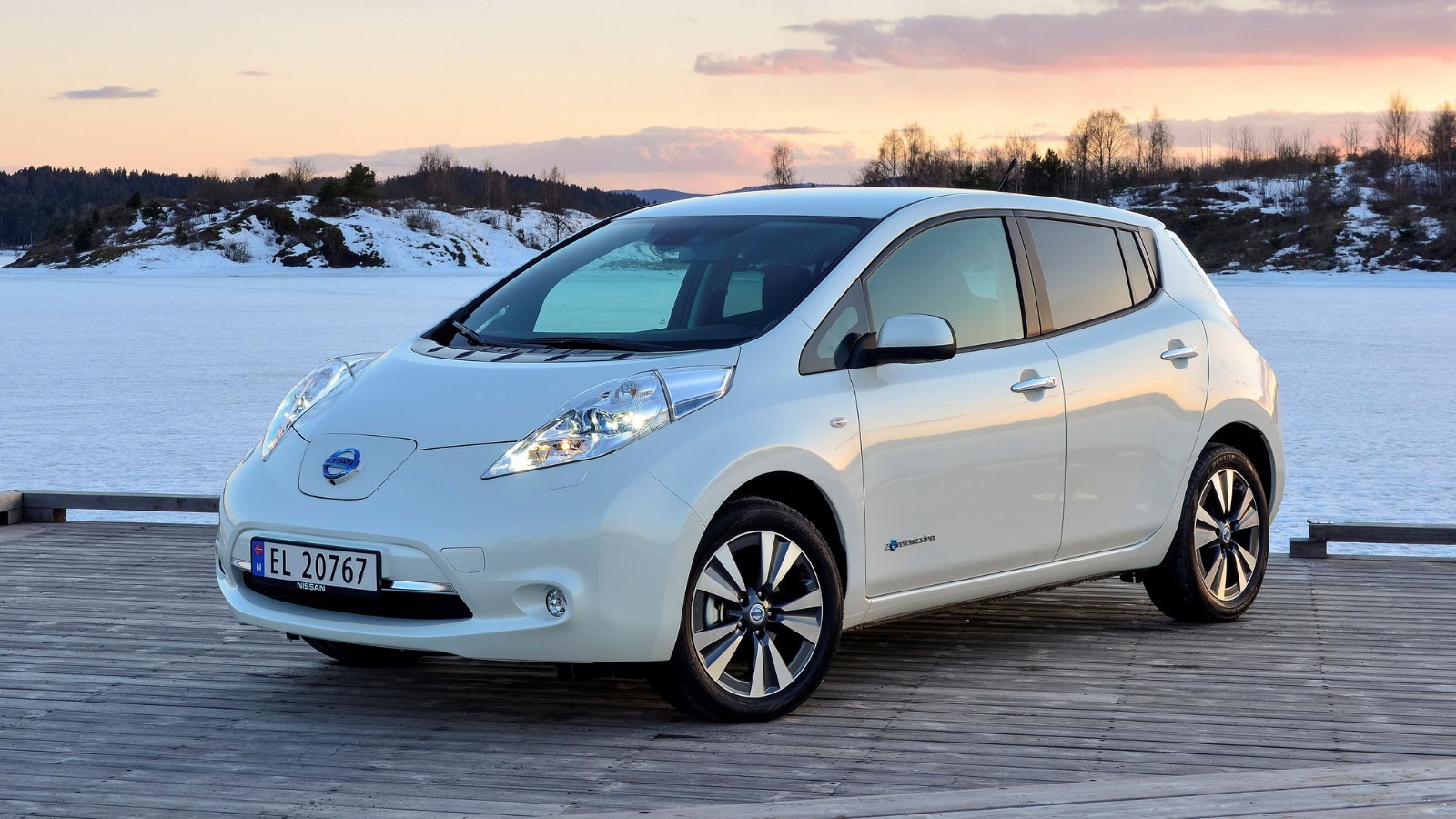
This energy is funneled to a front-mounted electric motor, which utilizes 80 kW to produce a maximum output of 107 horsepower. One of the standout features of electric motors is their ability to deliver peak torque instantly at 0 RPM—unlike internal combustion engines, whose output varies by design and speed.
In the Leaf’s case, that translates to a solid 208 lb-ft of torque available from a standstill. This instantaneous torque delivery is expected to result in off-the-line acceleration comparable to that of the Infiniti G35 sports car.
Naturally, one of the most important questions surrounding any fully electric vehicle is: how long does it take to recharge? According to Nissan, the Leaf can be fully charged in eight hours using a 200V power source.
For best results, a high-capacity 220V outlet is recommended; otherwise, using a standard 110V AC outlet will double the charge time. Impressively, the Leaf supports a 50 kW AC fast-charge system that can recharge the battery to 80%—enough for about 80 miles of range—in just 30 minutes.
If you’re in a rush, a 10-minute quick charge can give you an additional 31 miles. While the fast-charging hardware is currently too costly for most home setups, Nissan expects municipalities and public infrastructure to fill that gap.
One downside of housing all this advanced electronic equipment is added weight. However, because the battery pack is mounted low in the chassis, it helps lower the vehicle’s center of gravity, which should translate into a solid and responsive handling experience.
2. Chevrolet Volt (1st Gen)
While innovative as a plug-in hybrid, the first-gen Volt (2011–2015) suffers from several reliability issues that crop up with age.
- Why it fades: Transmission issues, electronic failures, and battery glitches.
- Note: Later models improved significantly, but the early ones struggle past 150,000 miles.
General Motors launched the second generation of the Chevrolet Volt in 2015 for the 2016 model year, significantly enhancing the vehicle across the board and addressing most of the shortcomings of its predecessor.
Following the global financial crisis, consumers worldwide became increasingly mindful of fuel consumption, and the 2016 Chevrolet Volt was positioned as a highly efficient option.
However, GM faced stiff competition, as other electrified vehicles were entering the market. While the Volt was one of the few plug-in hybrids available at the time, the system’s full potential wasn’t always realized, largely because many owners didn’t regularly charge their cars, and public charging infrastructure was nearly nonexistent.
With the redesigned 2016 Volt, GM aimed to make its compact hatchback more visually appealing. Critics had described the previous model as somewhat rough around the edges, prompting a design overhaul.
The second-generation Volt featured a more refined front fascia, including swept-back headlights with clear lenses that gave it a sportier appearance. A broad, slim grille featured a bold horizontal slat showcasing the Chevrolet badge, while the lower bumper included a central air intake accented with silver trim and vertical side vents that housed the daytime running lights.
Retaining its compact hatchback configuration, the 2016 Volt presented a more fluid silhouette. GM smoothed the transition between the rising hood and the sharply raked windshield. The curved roofline flowed into a sloping tailgate, rounding out the greenhouse design.
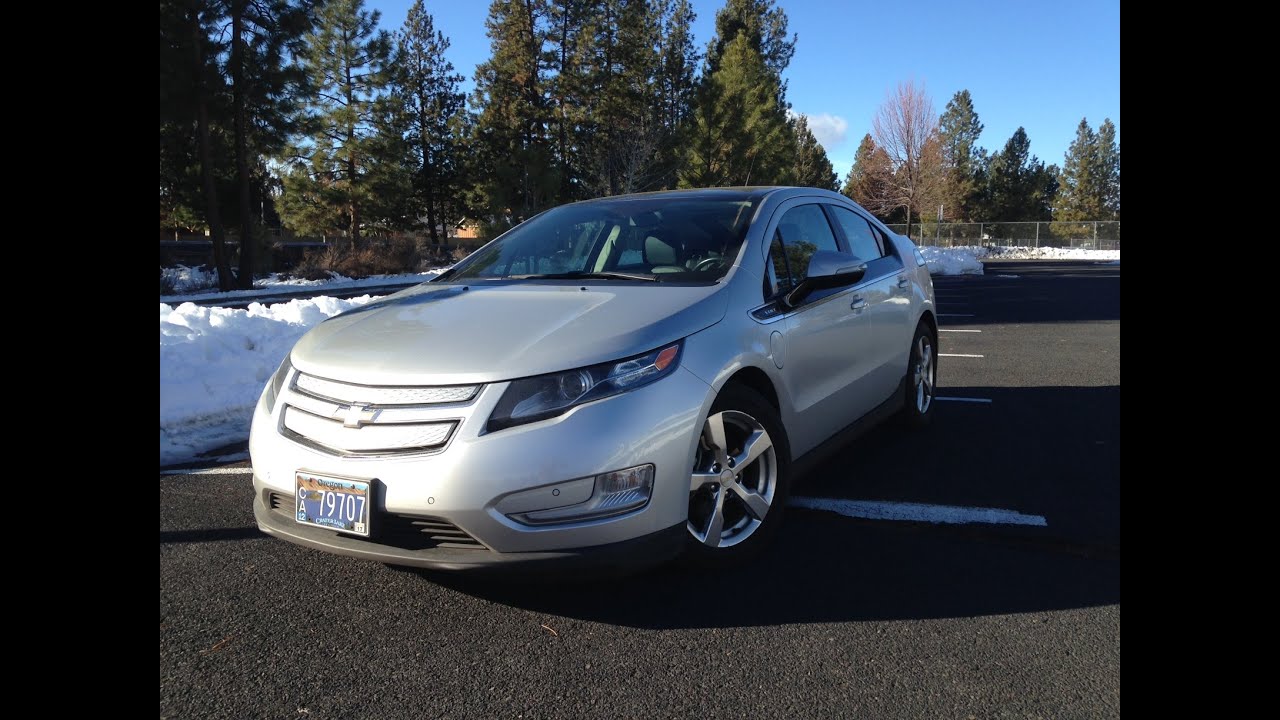
At the rear, the updated Volt showcased taller, corner-mounted taillights with clear lenses—a notable departure from the narrower, horizontal units of the previous generation. The tailgate also displayed the bow-tie emblem just below the integrated lip spoiler, enhancing its modern look.
Although the previous Volt’s interior had a futuristic flair, the 2016 model made considerable strides in refinement and usability. The digital driver information display was larger and delivered improved resolution. An eight-inch touchscreen offered enhanced functionality and a crisper image. GM sold the plug-in hybrid in two trims—LT and Premier.
The LT came equipped with premium cloth upholstery, while the Premier grade elevated comfort with heated leather seats. In the rear, a 60/40 split-folding bench seat provided flexibility, and in the top trim, the outboard rear seats were also heated.
The most notable advancement in the 2016 Chevrolet Volt EREV (Extended Range Electric Vehicle) was its improved powertrain. Though the new battery pack maintained the same 16 kWh capacity as before, it weighed 21 pounds (10 kg) less due to new technology developed in collaboration with LG Chem.
Additionally, the two-motor drive unit was 100 pounds (45 kg) lighter than the previous version. The safety suite also saw upgrades, with the inclusion of forward collision alert and lane keep assist. This new configuration delivered an all-electric driving range of up to 53 miles (85 km) and allowed the Volt to accelerate from 0 to 60 mph (0–97 kph) in approximately 8.9 seconds.
3. BMW i3
The quirky and stylish BMW i3 received praise for innovation, but it hasn’t aged well in terms of reliability and value.
- Why it fades: Expensive parts, limited range, and high repair costs.
- Cons: Battery replacements are costly and not always available.
The first-generation BMW i3 EV was notable for its cutting-edge carbon-fiber construction and unconventional design, yet it never achieved strong sales in the U.S. market.
Now, BMW aims to change that narrative with the upcoming 2026 BMW i3 battery-electric sedan, targeting both the U.S. and international markets. While this new model carries the i3 name, it’s an entirely fresh vehicle built on BMW’s newly unveiled Neue Klasse battery-electric platform.
This platform will support not only the forthcoming i3 sedan but also the iX3 compact crossover EV, signaling the start of BMW’s new dual-platform approach—where electric vehicles are sold alongside their internal combustion counterparts.
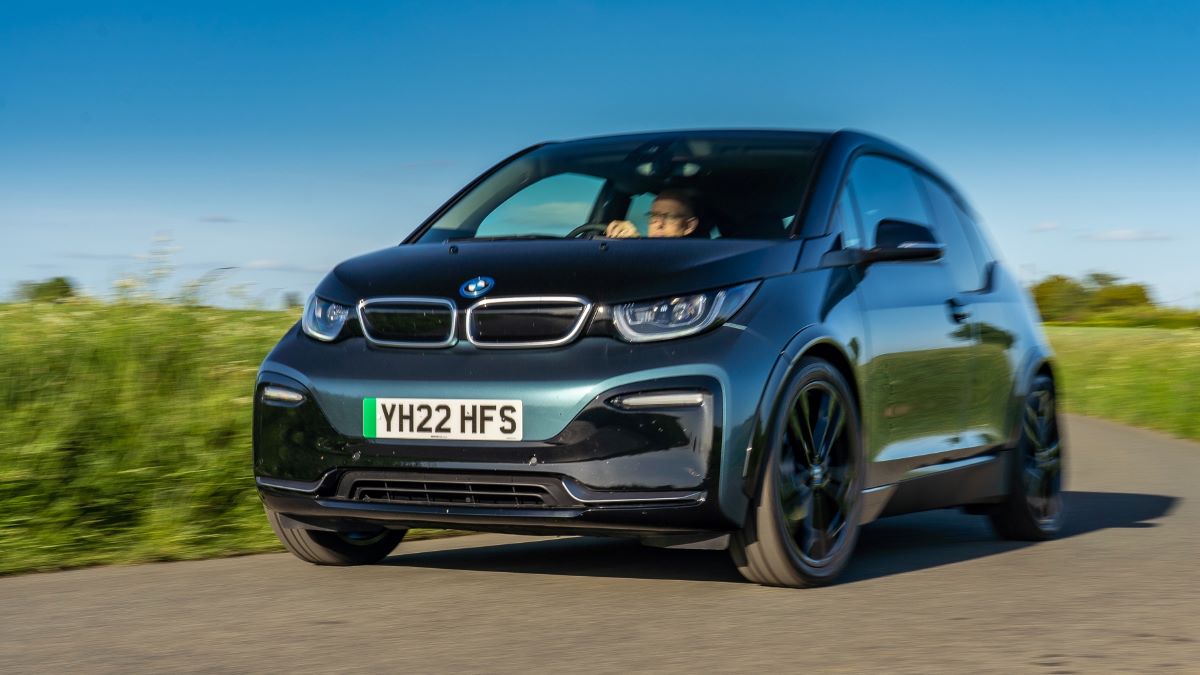
This represents a shift from the current setup, where some EVs like the i7 and 7-series share platforms and bodywork with gasoline-powered versions.
The new i3 will be sold alongside the classic BMW 3-series, which itself is expected to receive a refresh in 2026. In terms of design, the production version of the i3 is likely to dial back the concept vehicle’s more dramatic elements but still present a more contemporary look compared to the standard 3-series.
While official specifications have yet to be released, industry rumors and BMW’s typical product evolution suggest that the new i3 will be available in both rear- and all-wheel-drive configurations, with a high-performance M variant expected to follow later in the lineup.
4. Ford C-Max Hybrid
The Ford C-Max aimed to compete with the Prius but failed to deliver the same durability.
- Why it fades: Transmission problems, electronic gremlins, and inconsistent battery life.
- Owner complaints: Drivability issues and declining fuel economy with age.
The Ford C-Max, while comfortable and competent, fails to deliver on its high EPA-estimated fuel economy figures, which feel more like fantasy than reality. When it was introduced to the U.S. market in 2013, the C-Max hybrid seemed like a modern and virtuous glimpse into a greener automotive future.
However, as the industry has evolved with increasingly efficient and innovative vehicles, the C-Max has largely remained unchanged, with only minor updates. Competitors like the Chevrolet Bolt EV and Hyundai Ioniq have made significant advancements, while the C-Max has rested on its initial promise.
There are still positives to highlight: the C-Max is more engaging to drive than many other hybrids, thanks to its shared underpinnings with the agile Ford Focus, and its hatchback design offers more cargo room than many sedans. Still, with its mediocre real-world fuel economy and aging design, the car’s futuristic appeal has largely faded into obscurity.
For 2018, there are strong rumors that Ford will discontinue the C-Max in the U.S. by the end of the year. The plug-in hybrid Energi version was already dropped after 2017, leaving only the conventional hybrid version unchanged from the previous year.
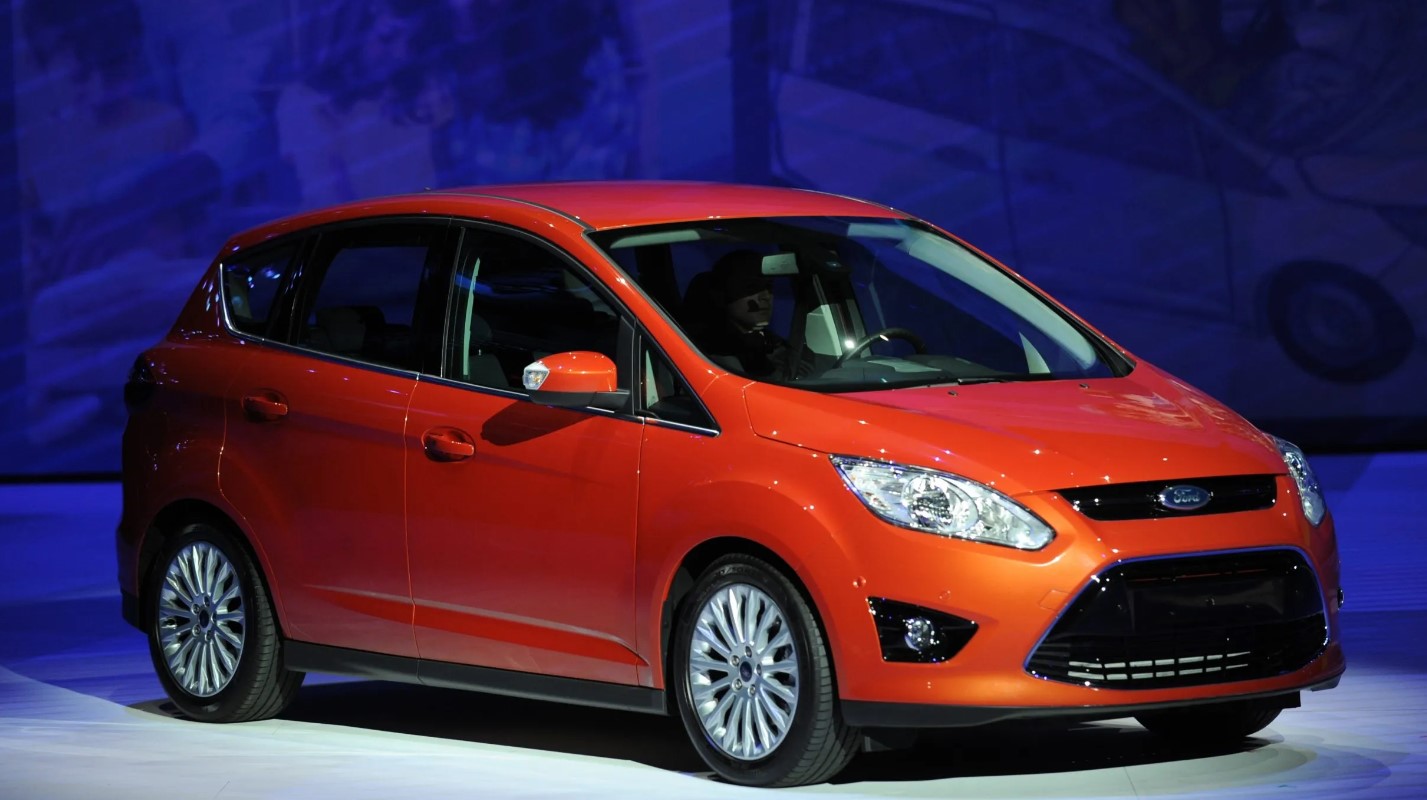
The 2018 C-Max starts at $24,995 for the SE trim and climbs to $28,150 for the more feature-rich Titanium model. With no plug-in option and only two trim levels, choosing a version is relatively simple.
While the SE is the entry-level model, the Titanium trim adds premium features like leather seating, heated front seats, the Sync 3 infotainment system, and rear parking sensors, making it a more appealing choice for buyers seeking extra comfort and convenience.
The C-Max hybrid’s powertrain is smooth and well-integrated, offering a seamless transition between electric and gasoline power. However, it fails to stand out as either particularly quick or exceptionally efficient, instead landing in a lackluster middle ground.
The drivetrain includes a continuously variable automatic transmission (CVT), a 2.0-liter four-cylinder gas engine, two electric motors, a battery pack, and front-wheel drive. In performance testing, the C-Max hit 60 mph in 7.9 seconds—impressive for a hybrid, though it doesn’t feel especially spirited.
Built on the same platform as the Ford Focus, the C-Max inherits some of its sibling’s driving characteristics, with accurate steering and a solid, well-weighted feel. However, its taller stance causes noticeable body lean in corners, and its grip on the skidpad was merely average.
In terms of efficiency, the C-Max lags behind the competition. It holds the lowest EPA ratings among rival hybrids and fails to break the 50-mpg mark in any driving condition—an area where vehicles like the Hyundai Ioniq and Toyota Prius excel.
On a real-world highway test, the C-Max managed only 33 mpg, a disappointing result for a vehicle marketed on fuel economy. Inside, the C-Max provides a spacious and comfortable environment, though the interior design is clearly a generation behind Ford’s newer models
. The layout, particularly the center stack, is dated, and the SE model’s bulky dash-mounted shifter and mechanical parking brake take up a lot of space in the front row. Standard features include power-adjustable cloth seats in the SE and leather-trimmed seats in the Titanium. While we had no complaints about the SE’s seating comfort, the cabin lacks the polish of newer competitors.
Ford’s Sync and Sync 3 infotainment systems are easy to use, and even the base model comes with plenty of charging ports. Unfortunately, Apple CarPlay and Android Auto are not standard, though they are available as options. Even so, Sync remains more intuitive than many competing systems. The C-Max’s hatchback body style offers excellent cargo space, making it one of the more practical options in its class.
The rear seats are simple to fold flat using a lever on the outer side of each seat, creating a large, flat loading area. In our testing, we fit six carry-on suitcases behind the rear seats and a total of 20 with the seats folded down. Overall, while the C-Max still offers practicality and some driving enjoyment, its outdated design and uncompetitive efficiency render it largely irrelevant in today’s hybrid market.
5. Fiat 500e
The 500e was a compliance car designed to meet regulations rather than deliver long-term satisfaction. It was never built for longevity.
- Why it fades: Limited range, unreliable charging systems, and fragile electronics.
- Afterthought: Fiat pulled out of the U.S. market partly due to poor reliability and support.
Choosing an eco car is about more than just efficiency—it’s about making a lasting impact on your wallet and the environment.
The Fiat 500e is a compact all-electric hatchback and currently the only model offered in the United States by the iconic Italian automaker. While it closely resembles the Fiat 500 that was discontinued in 2019, this new version is actually a redesign introduced just last year.
Both generations pay heavy tribute to the original 1950s Cinquecento, capturing its nostalgic charm in a modern package. Staying true to its heritage, the current 500e feels most at ease zipping through urban environments, where it provides just enough functionality and convenience to satisfy the demands of everyday commuting.
The particular trim highlighted here is the 500e INSPI(RED), which offers an EPA-estimated range of 149 miles. As with most electric vehicles, the battery is expected to lose about 1–2% of its range each year.
Based on this average degradation rate—especially within the first 50,000 miles as the battery stabilizes—Recurrent’s study suggests that the estimated range after eight years could drop to around 127 miles. This trend aligns with data from 15,000 EVs that were analyzed, showing gradual range loss as a normal part of long-term EV ownership.
When it comes to charging, the Fiat 500e uses the SAE Combo plug, which supports Level 1, Level 2, and DC Fast charging. Charging the vehicle using a 240V home outlet—similar to what you’d use for a clothes dryer—takes about 6.2 hours for a full charge.
It’s worth noting that EV battery longevity can be preserved by keeping the charge level between 30% and 80%. The vehicle currently doesn’t support NACS (Tesla) charging stations, but this could change in the future depending on manufacturer updates.
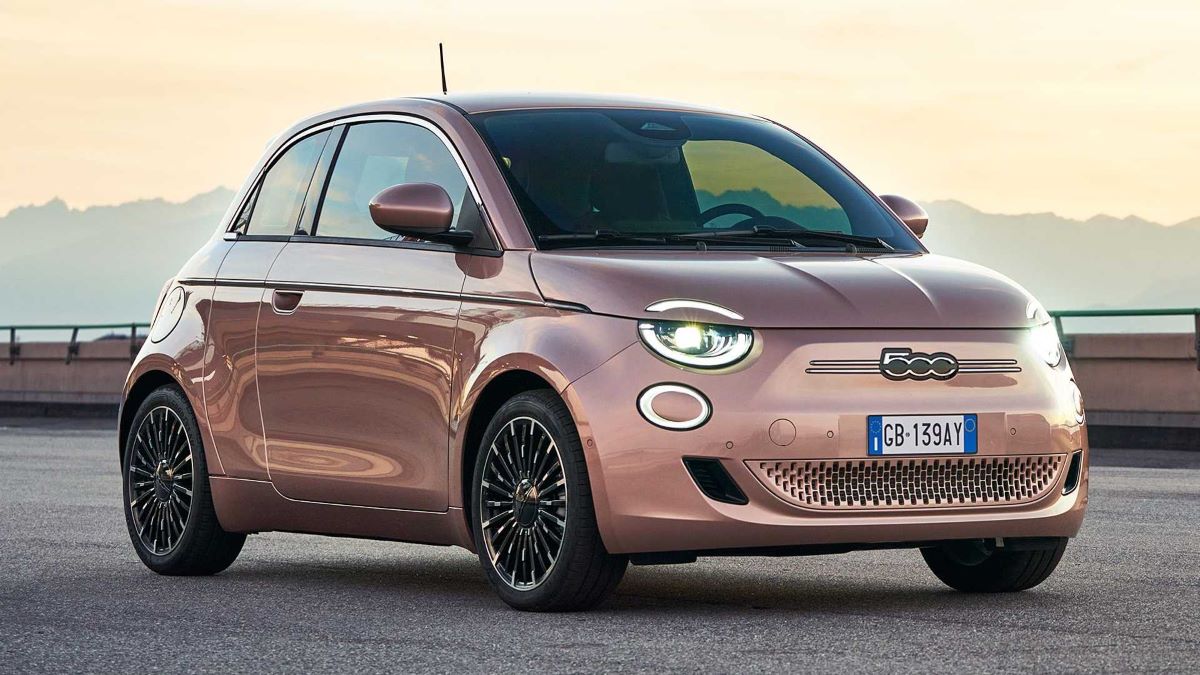
The EV battery is covered by an eight-year or 100,000-mile warranty, as mandated by the federal government. This warranty also includes provisions for replacement if battery capacity falls below a specified threshold. Based on data from GeoTab, most EV batteries are expected to outlast the practical lifespan of the vehicles themselves, assuming normal degradation rates continue.
Prospective buyers may also benefit from various EV tax credits and rebates, which vary by state. Edmunds offers tools to help identify potential savings, although it advises customers to verify all eligibility and program details before making a purchase.
While monthly operating costs for the 500e are estimated at just $64 in North Dakota, the average for a traditional car in that state is about $159 per month—highlighting a potential cost advantage in driving an EV.
For those considering an electric vehicle, home charging is a major factor in ownership satisfaction. A 240V home charger offers the best convenience and performance, making EV ownership more practical if you can install one where the vehicle is typically parked.
While a standard 120V household outlet may suffice for plug-in hybrids, it’s not ideal for fully electric vehicles. Public charging infrastructure, meanwhile, is still in development and can be inconsistent.
Tesla’s Supercharger network is praised for its speed and reliability, but many rival DC fast chargers suffer from technical glitches and long wait times. Depending on your location and vehicle, it’s crucial to research your charging options thoroughly.
Installing a Level 2 charging setup at home may cost up to $1,600 or more. If your existing electrical panel can handle the additional load, installation may be possible for under $1,000. However, if an electrical upgrade is needed, expect the total cost to rise significantly due to panel replacements or the addition of dedicated circuits.
The Fiat 500e remains a standout for its unmistakable Italian charm. It originally gained traction by riding the wave of retro-styled small cars kicked off by models like the Mini Cooper and Volkswagen Beetle. Its compact design and cheerful aesthetic make it hard not to smile when you see one. It’s agile, fun to drive, and fits easily into tight urban parking spots.
With the launch of a special-edition model developed with the House of Armani—and a sound system tuned by none other than Andrea Bocelli—the 500e leans all the way into its Italian roots. It’s so authentically Italian, it might as well come with a passport and a pre-installed Duolingo subscription.
Stick with proven platforms like the Toyota Prius or Camry Hybrid for long-term reliability, and be cautious of first-generation experiments like the Nissan Leaf or Fiat 500e, which may leave you stranded as their technology ages.
By prioritizing longevity, buyers can make greener and more economical decisions that pay off for years to come.

